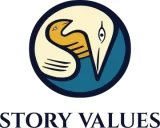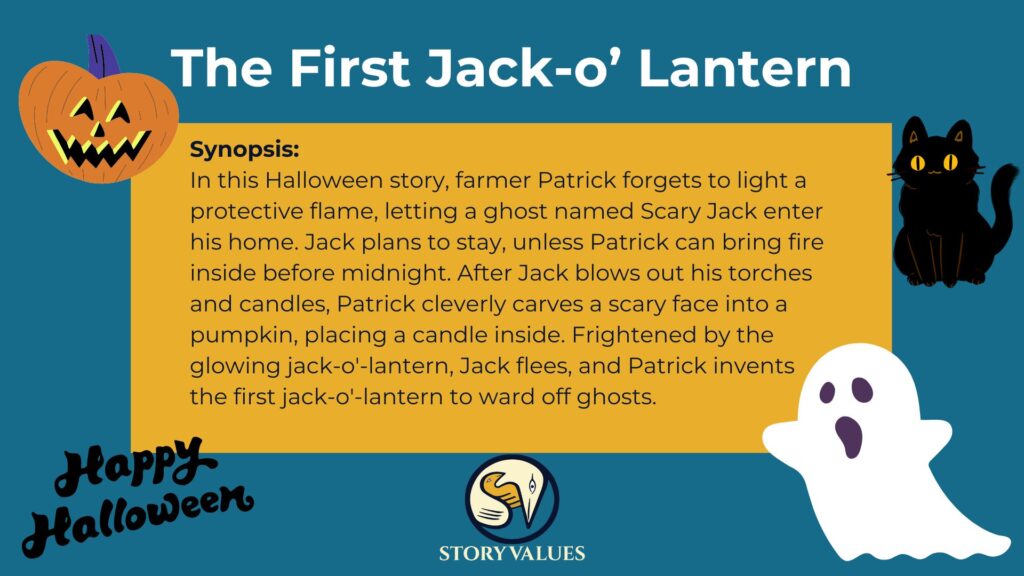In recognition of Halloween, we listened to the spooky, yet humorous tale, The First Jack-o’ Lantern. The story demonstrates the importance of remaining calm and problem solving during a challenge. Here are three follow-up activities for child care centres and families based on the Halloween story of, The First Jack-o’ Lantern:
1. Art Activity: Decorate a Pumpkin Face
Materials: Orange paper plates, stickers, googly eyes, glue, and markers
- Give each child an orange paper plate to represent a pumpkin.
- Use stickers and pre-cut shapes for eyes, noses, and mouths, allowing the children to create their own jack-o’-lantern faces.
- They can also glue on googly eyes or draw additional decorations with markers.
- This fine motor activity helps children with creativity and hand-eye coordination while connecting to the story.
2. Storytelling Activity: “Finish the Story” with Visual Aids
Materials: Simple story props like a pumpkin, a toy ghost, and a small flashlight
- Use the props to briefly retell the story in simple terms, pausing at key moments and asking the children, “What happens next?” or “What should Patrick do?”
- Help them finish the story using one-word or short-phrase responses, giving them the chance to participate and feel engaged.
- This fosters early language development and encourages them to express their ideas.
3. Drama Activity: Pretend to Be Pumpkins and Ghosts
Materials: Scarves or lightweight cloths for the “ghosts” and paper headbands decorated as pumpkins
- Lead a playful game where some children act as pumpkins and others as ghosts. The pumpkins stand still while the ghosts move around them.
- At the teacher’s signal, the pumpkins “light up” (children hold their hands over their heads to mimic glowing) and the ghosts have to pretend to be scared and run away!
- This fun role-play promotes physical activity, imagination, and helps with understanding basic concepts from the story.
These activities are simple, developmentally appropriate for toddlers and preschoolers, and help reinforce the story in a fun, interactive way.

